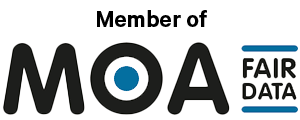Consumers don’t think (about) how they feel. They don’t say what they think and they don’t do what they say David Ogilvy - 'Father of Advertising', Founder Ogilvy & Mather
David Ogilvy's quote demonstrates the importance of neuromarketing. As humans, we often find it difficult to predict our own behaviours. Furthermore, the processing of marketing messages is fast, fleeting, and emotional, and also largely taking place at a subconscious level.
Because marketing messages are largely processed at a subconscious level, asking people what they think often does not yield the right results. Moreover, the answers provided by such questioning are influenced to be socially desirable - to gain approval/acceptance of the person asking the question.
Neuromarketing, on the other hand, directly measures the conscious and subconscious effects of marketing deep within the brain - the very place where marketing take effects. This allows consumers behaviours to be accurately predicted.
What is neuromarketing and what does it do?
Measuring the unconscious effects of marketing communications
Neuromarketing enriches marketing knowledge with insights from neuroscience. Neuroscience studies brain responses (such as emotions) and how these responses might affect our behaviour, choices and perception.
These insights are used in marketing communications to predict the behaviours and choices of consumers. Neuromarketing also provides advice on how to encourage the desired consumer behaviours. This optimises the effectiveness of campaigns and communications, leading to better investments and ROI.
Neuromarketing vs traditional research
Now, you may be wondering, when do you choose neuromarketing research and when do you choose traditional research which primarily uses questionnaires and interviews?
We posit that neuromarketing research always provides objective answers to your research questions. As you have read in the quote by Ogilvy above, people do not say what they think and do not do what they say.
This is true and demonstrates that only asking questions through questionnaires or interviews lead to inaccurate inferences and conclusions, because you will likely get contemplative answers or answers which are socially desirable. This is not the case with neuromarketing, because it directly measures brain responses.
However, we cannot answer everything simply with fMRI, EEG or Eye Tracking. There are questions where we would want to know the how, what or why; such questions are difficult to answer purely through brain responses. To gain deeper insight, we combine neuromarketing research with questionnaires. This way, we discover how consumers objectively think and react, and their rationalisation behind the results. The combination of these research methods provides the best and most valuable insights.
What is neuromarketing used for?
Neuromarketing offers answers to (almost) all marketing questions. Since you have invested a lot of time and money in campaigns or communications, it is smart to investigate their effects or if they can be improved. For example, you can use neuromarketing for -
- Advertising optimisation
Consider advertising optimisation as a pre and post ad testing. You can test an ad which is (almost) ready, enabling you to still adjust the ad before it goes live. Once the ad goes live, you can test it again to gain insights for the design of your next ad. - Advertising concept testing
Test your advertising concept before it goes live. This way, the effectiveness of the ad is predicted in advance, allowing you to adjust the concept before it goes live. This saves you unnecessary costs and increases the ROI of the ad. - Branding and brand growth
Discover your brand's associative network in the brain. Gain knowledge to associations which contribute to brand awareness, brand affinity and brand recognition. With these insights, you optimise your branding strategy and realise growth. - Valuing
Gain insight to how the brain assign value. Consider this example - what works better: "30% less sugar" or "with added vitamin C?" Valuing studies can also help you answer questions such as "is the communication proposition X better appreciated by consumers than proposition Y?
- Price optimisation and choices
Discover the ideal price for your product or service for maximum profit. The optimal price is measured directly from the brain and computed precisely down to the cent. Price optimisation and choices also answer the question if a price increase or decrease is beneficial. - Packaging optimisation and choices
Test and compare your packaging. This way you will know if your new packaging contributes to higher sales, stands out on the store shelf and is more effective than the old packaging.
Neuromarketing research techniques
There are various techniques for researching and predicting consumer behaviours.
- fMRI: is the only technique that gives access to the complete decision-making process of consumers. It is the best technique for predicting consumer behaviours and is also affordable.
- EEG: measures the cognitive processes in the brain, such as calculations. This technique is the most reliable for predicting the optimal price for your product or service.
- RIAT: measures the direct and subconscious associations evoked by your brand and contributes to brand growth. RIAT uses time pressure to eliminate participants' conscious thinking and over-rationalization.
- Eye Tracking: reveals attractive elements in your marketing communications. This technique is used together with fMRI or EEG as it provides additional information of participants' attention, completing the market research.
Other neuromarketing research
Is your research topic not mentioned above? We can always look at how we can answer your question. Neuromarketing research provides access to unconscious thoughts, emotions and preferences. Everything you can see or hear can be measured in the brain.
For example, we have studied the unconscious influence of radio commercials, examined infatuation in the brain and studied the emotional impact of the new NS broadcasting voice.
Neuromarketing learnings
With neuromarketing research, we are increasing our knowledge base on the psychological effects of marketing and communication. These insights are used to create more effective marketing communications. Take a look at these learnings and apply the techniques you can use. We have shared science-based learnings for Ad & Concept Testing, Branding and Pricing.
Neuromarketing customer cases
Neuro research is the solution for Centraal Beheer for pre testing ads. Neurensics translates the research insights into concrete and realistic adjustments of the advertising material which can be directly used by our advertising agency. Natasja van Buuren, Marketing Intelligence, Centraal Beheer
See what neuromarketing can do for you
Now, do you think that this is exactly what I need or do you still doubt whether neuromarketing research fits your question? Either way, please contact us without obligation.
We offer both neuromarketing research and qualitative research. This makes us an all-rounded neuro-marketing research company.










